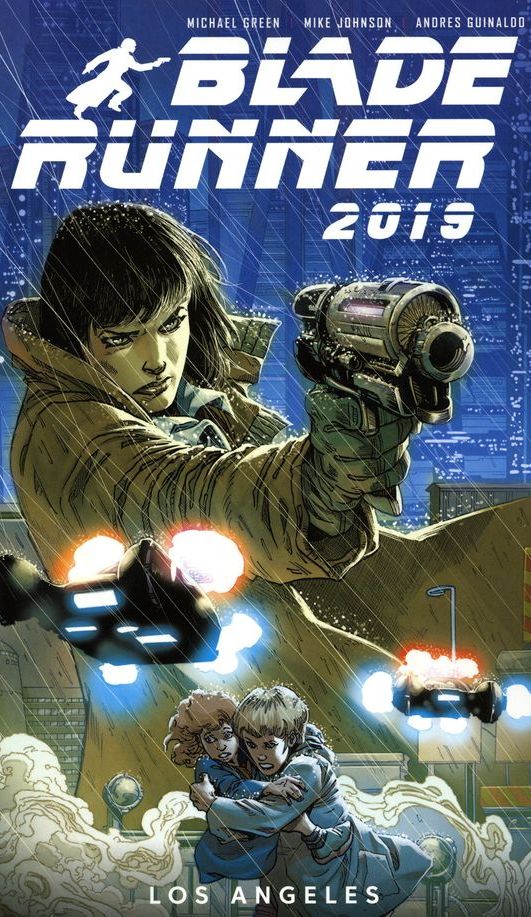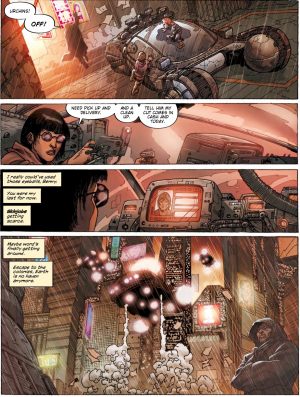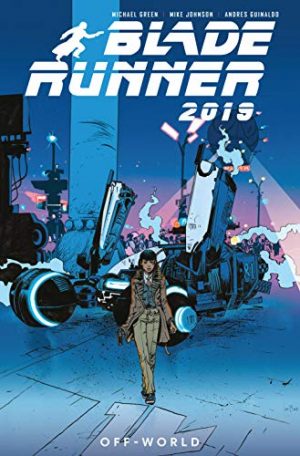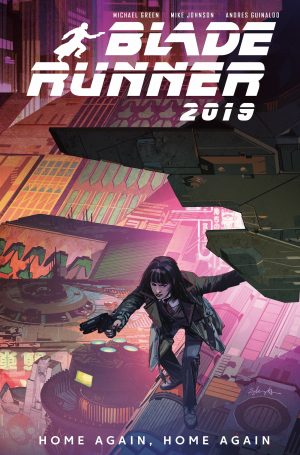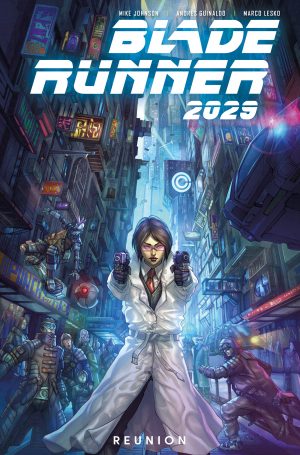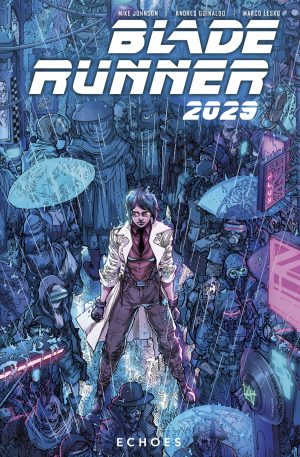Review by Jamie McNeil
Ridley Scott’s film Blade Runner (inspired by Phillip K. Dick’s Do Androids Dream of Electric Sheep?) arrived to little fanfare in 1982, but over time grew a cult following. Sci-Fi writers and film makers cite it is an inspiration with Empire Magazine regularly listing it among the 500 favourite films as polled by readers. Its sequel Blade Runner 2049 was years in the making and brought a renewed interest in the world it is set in. As a result Titan Comics and Alcon Publishing have teamed up to create a series set in the Blade Runner universe featuring new characters and new stories. Recruited to the project is Blade Runner 2049’s screenwriter Michael Green working with his regular comics writing partner Mike Johnson and artist Andres Guinaldo on Blade Runner 2019: Los Angeles. If that’s not enough it also features cover art for individual issues by Blade Runner’s original concept artist Syd Mead.
LAPD detective Aahna “Ash” Ashina is the department’s best Blade Runner. She has an uncanny knack for tracking down Synths (synthetic humans) though also has ulterior motives. When tycoon Alexander Selwyn’s wife Isobel and daughter Cleo disappear, Ash is directed by the powers that be to find Selwyn’s family. So much of it sets Ash’s alarm bells off from the start. For one Selwyn is a close personal friend of Eldin Tyrell, head of the Tyrell Corporation who created the Synths she tracks down in the first place. The more Ash digs the more everything looks and feels like a cover up. It raises new questions that should be left unanswered. Answering them in a society where anything and anyone who questions the status quo is expendable will upend everything.
Writers Green and Johnson set Los Angeles in the same period as the original film, a dystopian setting where Synths are outlawed, the poor scrabble in smog-choked slums and the rich live in secluded opulent estates. The plot is straightforward yet well paced, using tropes familiar to the original’s fans though still producing some nice surprises by reversing those tropes unexpectedly. The mood is tense, maintained by colourist Marco Lesco whose gritty washes facilitate the grimy impoverished underbelly of Los Angeles. The writers keep you invested because so much of Ash’s interaction with her environment is relatable, she herself sympathetically flawed. Technologically we’re closer to having hover-boards (YES!) than Spinners (flying cars) yet the social factors of corrupt politics, biased news conglomerates, societal deprivation and xenophobia are all unfortunate marks of humanity.
Artist Guinaldo keeps the cast’s features minimal, focusing on the details of their clothing as the move or the how their eyes respond to various situations. The aerial highways and bustling cities are superb, his technology captivating and there are some intense conflict situations with solid action sequences. Ash herself doesn’t engage the reader well, but is she intended to be aloof? More engaging are the crowds filling single frames and full page spreads, though there is an evident improvement over the pages.
It is very difficult to find anything technically wrong with Blade Runner 2019 in either the art or the writing. How strongly you feel about the film series is more likely to determine how much you enjoy the graphic novel or if indeed you will even pick it up. It looks good and reads well with a cliff-hanger ending promising a sequel that will go beyond Los Angeles and perhaps take more inspiration from Phillip K. Dick’s other works. The series continues with Off-World.
